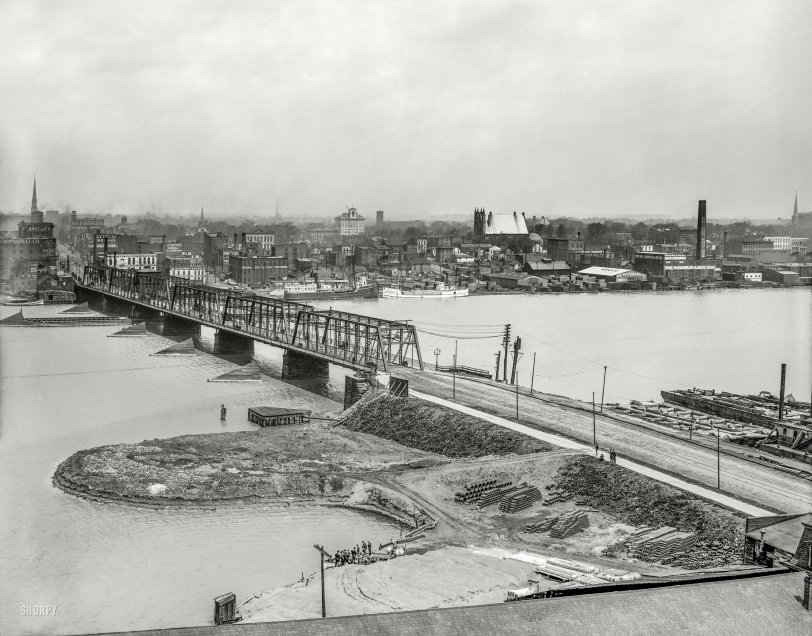


Framed or unframed, desk size to sofa size, printed by us in Arizona and Alabama since 2007. Explore now.
Shorpy is funded by you. Patreon contributors get an ad-free experience.
Learn more.

- Heckuva remote control!
- Sometimes — Things Go Bump!
- I SEE THE LIGHT
- Union Switch and Signal Company
- Get That Light Out Of My Eyes
- Eggs. Eggs. Eggs. The Egg Man is Here!
- Foreboding caption
- Famous Hollywood faces
- Not just S&P
- re: Those things in the jar
- Up In Smoke
- Medical Smoking
- Quick fix
- A Quink Comment
- If You’re Like Me, Never
- Delivering the News
- U.S.A.
- S&P
- 1940 Zenith radio model 6G601
- Quality goes in before the name goes on!
- Snazzy skirt
- Carbon Arc Lamps
- Illuminate us
- I remember it well
- I can't prove it
- Complicated then, forgotten now
- Bryan-Stevenson
- Skinny is as skinny does
- How do you rest in peace
- Riding the footboards
Print Emporium
Cherry Street Bridge: 1909

Circa 1909. "Water front -- Toledo, O." The Cherry Street Bridge over the Maumee River. 8x10 inch dry plate glass negative, Detroit Publishing Co. View full size.
The vessel on the left
is the Warrington, built 1868 at Detroit by J. H. Jones for the Prindiville interests of Chicago and named for a Chicago investor allied with Prindiville. It served the lumber trade until sold to the United States Lighthouse Service in 1870 and renamed simply Warrington. Its duty then was to carry building materials and other supplies to lighthouse installations on the lakes. It is undoubtedly shown loading such goods at Peoples Building Supplies. Sold to Chicago's Hines Lumber Company in early 1911 it would not last long. It sprung a leak in heavy weather August 21, 1911, and stranded a total loss near Charlevoix, Michigan, with no loss of life. The vessel ahead of it is the O. E. Parks, built 1891 at Saugatuck, Michigan, by James Elliott for Captain R. C. Brittain and others and named for Captain Oscar Parks who would be its first master as well as one of its owners. It also ran in the Lake Michigan lumber trade. Its steeple compound steam engine and boiler removed in 1928, its life as a powered vessel was resurrected the next year when Samuel Shields of Sault Ste. Marie, Michigan, dropped a 4-cylinder Kahlenberg Diesel into it and the vessel resumed the freight trade, but not for long. While off Thunder Bay Island, Lake Huron, on May 3, 1929, on its first trip as a motor ship the Parks encountered a storm that, reportedly, shifted the new engine's bed, opening the vessel's seams. It sank rapidly, its crew rescued by the local Coast Guard. The new Kahlenberg engine was salvaged and placed into the tug Betty D. in 1930.
Holy Toledo
Wow, so much to see here: the stacked-up lumber across the river at the Western Mfg Co.; the moodiness of the outlines of trees and buildings disappearing into the smoke/haze; the grand church; the numerous trades and products exhibited on the signs (saddler, hardware, foundry, seeds, blacksmithing, doors, stone, tiles, piano, lumber, marine gas engines); the lengths of pipe in different sizes piled up at both ends of the bridge; the gentle traffic on the bridge itself; the group of men with the horse cart attending to something going on with that shallow boat by the shore at the bottom of the photograph; and so much more to be revealed upon further scrutiny.
























On Shorpy:
Today’s Top 5